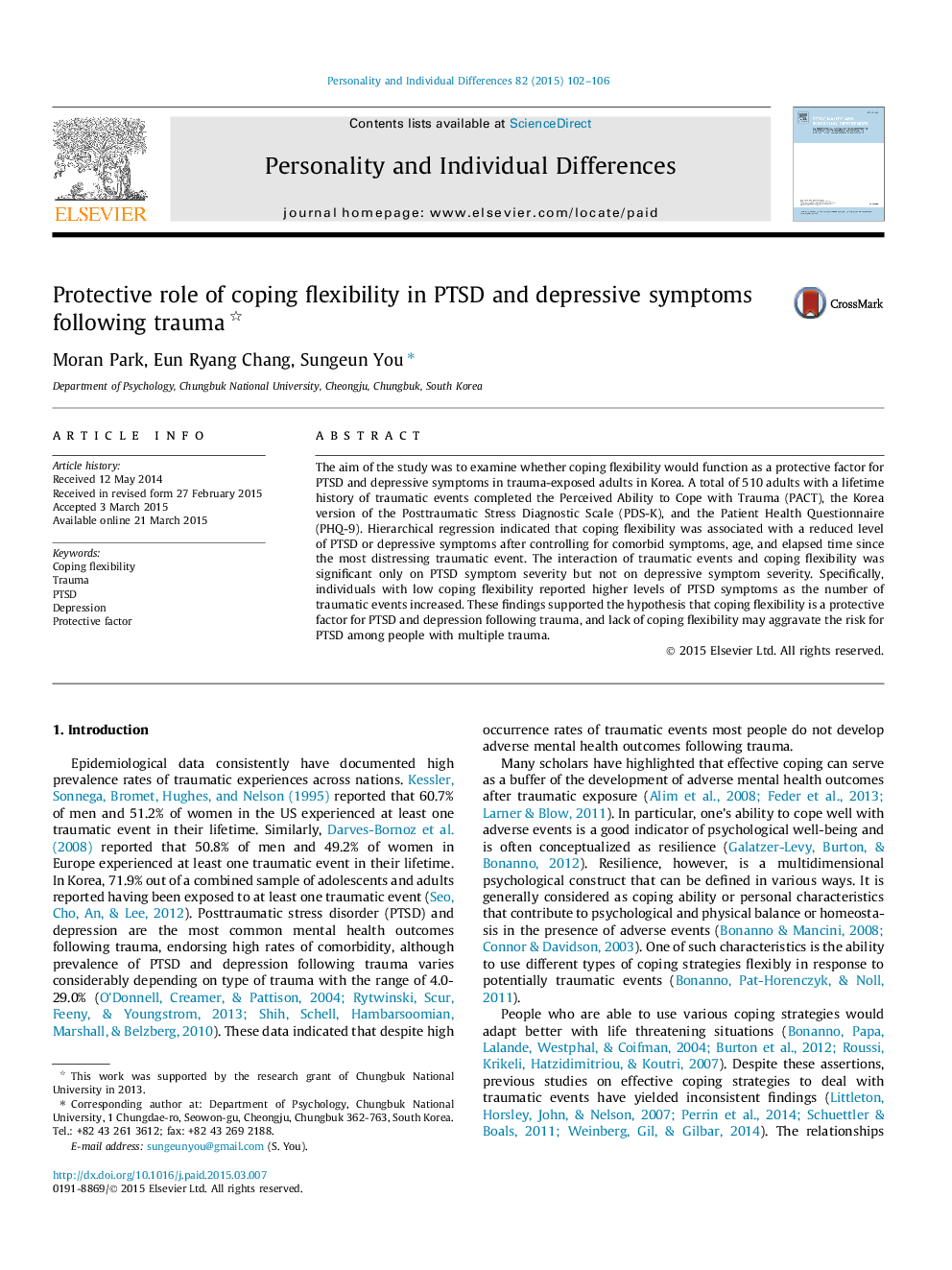| Article ID | Journal | Published Year | Pages | File Type |
|---|---|---|---|---|
| 890087 | Personality and Individual Differences | 2015 | 5 Pages |
•The two factor structure of the PACT was confirmed in a trauma-exposed community sample in Korea.•Coping flexibility functions as a protective factor for PTSD and depressive symptoms following trauma.•Coping flexibility moderated the relationship between the number of traumatic events and PTSD symptoms.
The aim of the study was to examine whether coping flexibility would function as a protective factor for PTSD and depressive symptoms in trauma-exposed adults in Korea. A total of 510 adults with a lifetime history of traumatic events completed the Perceived Ability to Cope with Trauma (PACT), the Korea version of the Posttraumatic Stress Diagnostic Scale (PDS-K), and the Patient Health Questionnaire (PHQ-9). Hierarchical regression indicated that coping flexibility was associated with a reduced level of PTSD or depressive symptoms after controlling for comorbid symptoms, age, and elapsed time since the most distressing traumatic event. The interaction of traumatic events and coping flexibility was significant only on PTSD symptom severity but not on depressive symptom severity. Specifically, individuals with low coping flexibility reported higher levels of PTSD symptoms as the number of traumatic events increased. These findings supported the hypothesis that coping flexibility is a protective factor for PTSD and depression following trauma, and lack of coping flexibility may aggravate the risk for PTSD among people with multiple trauma.
